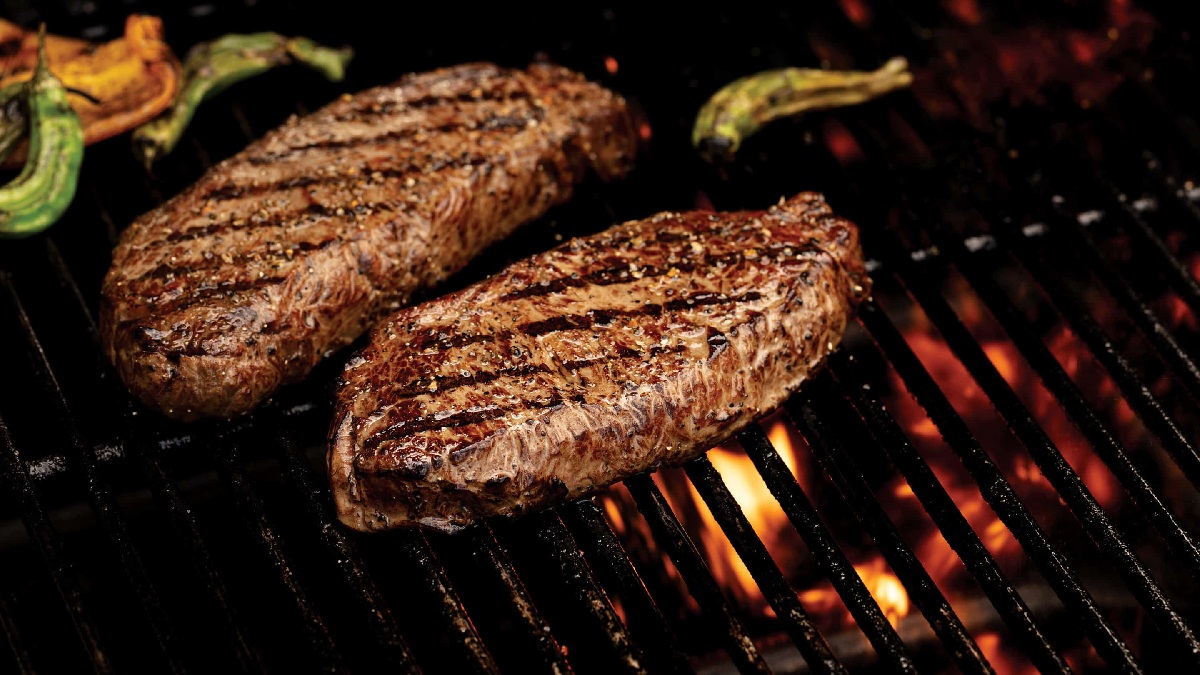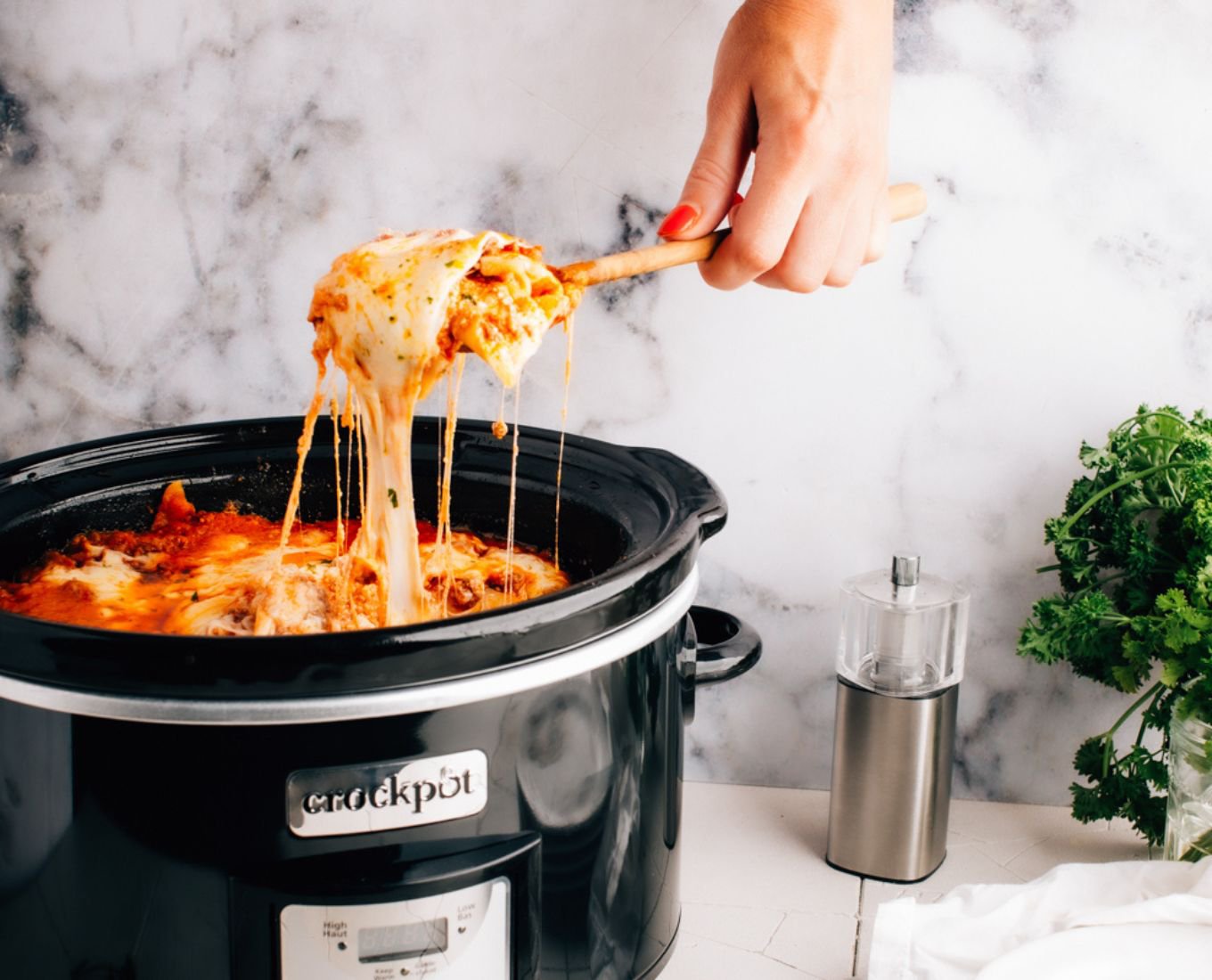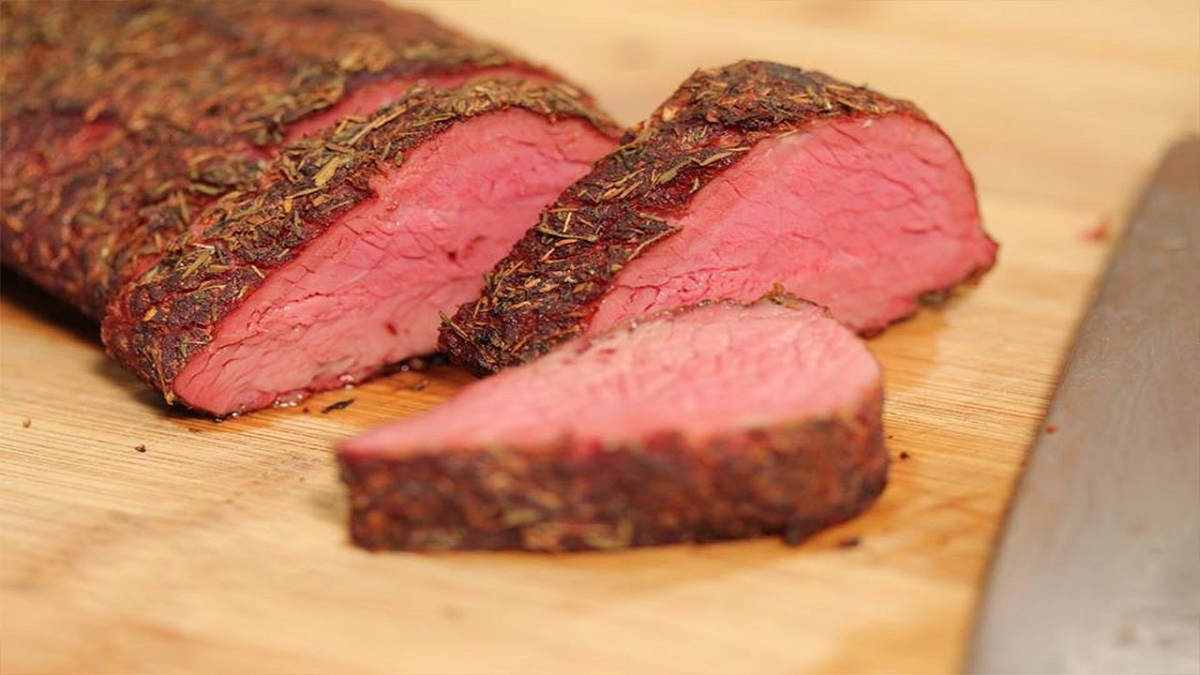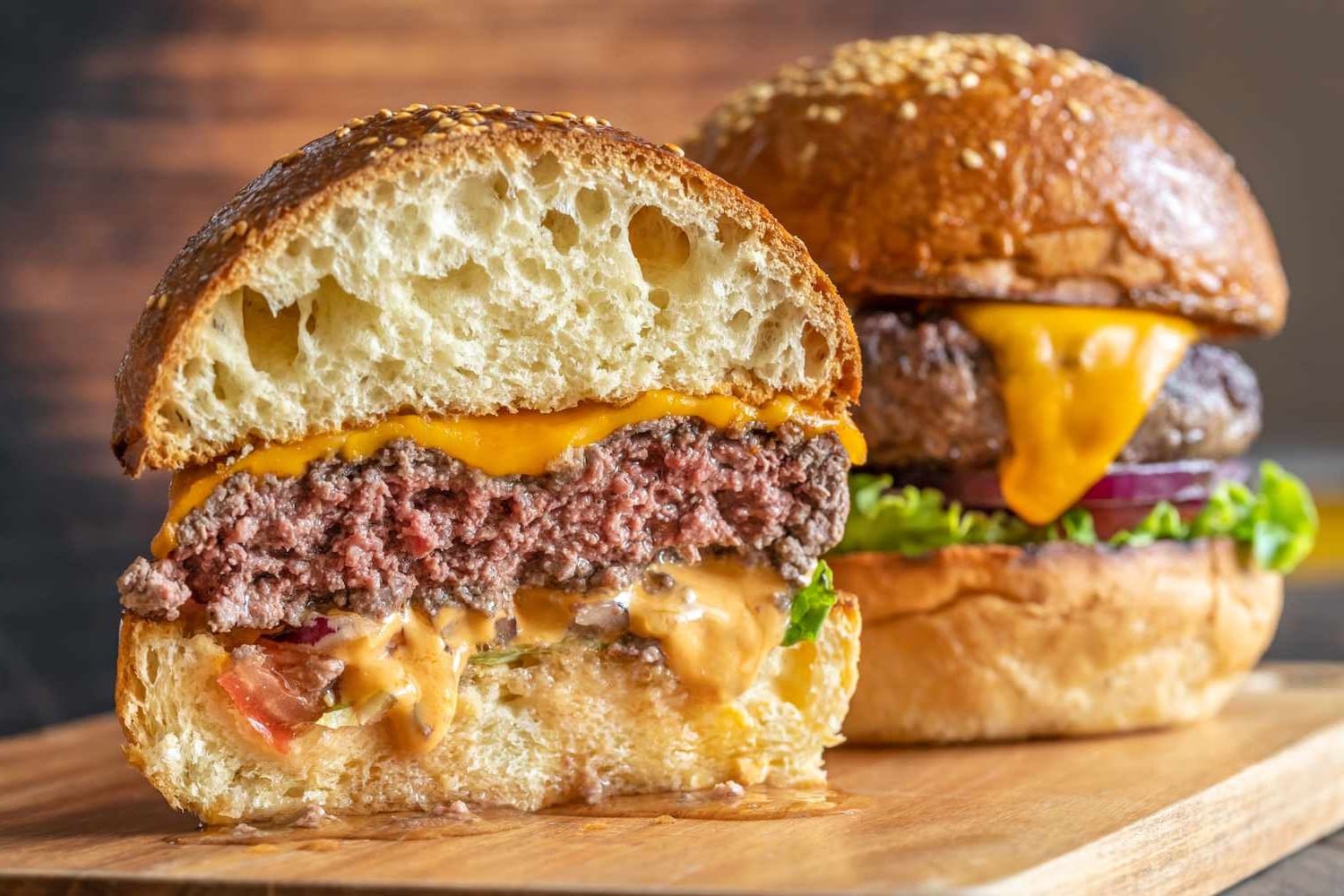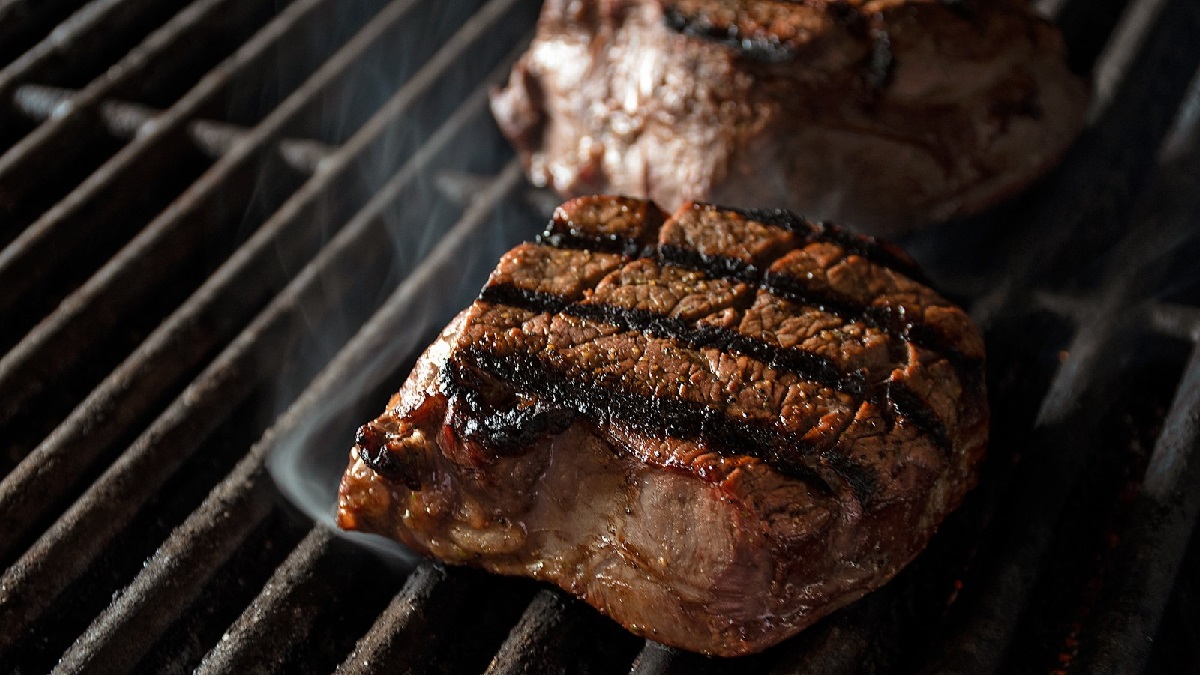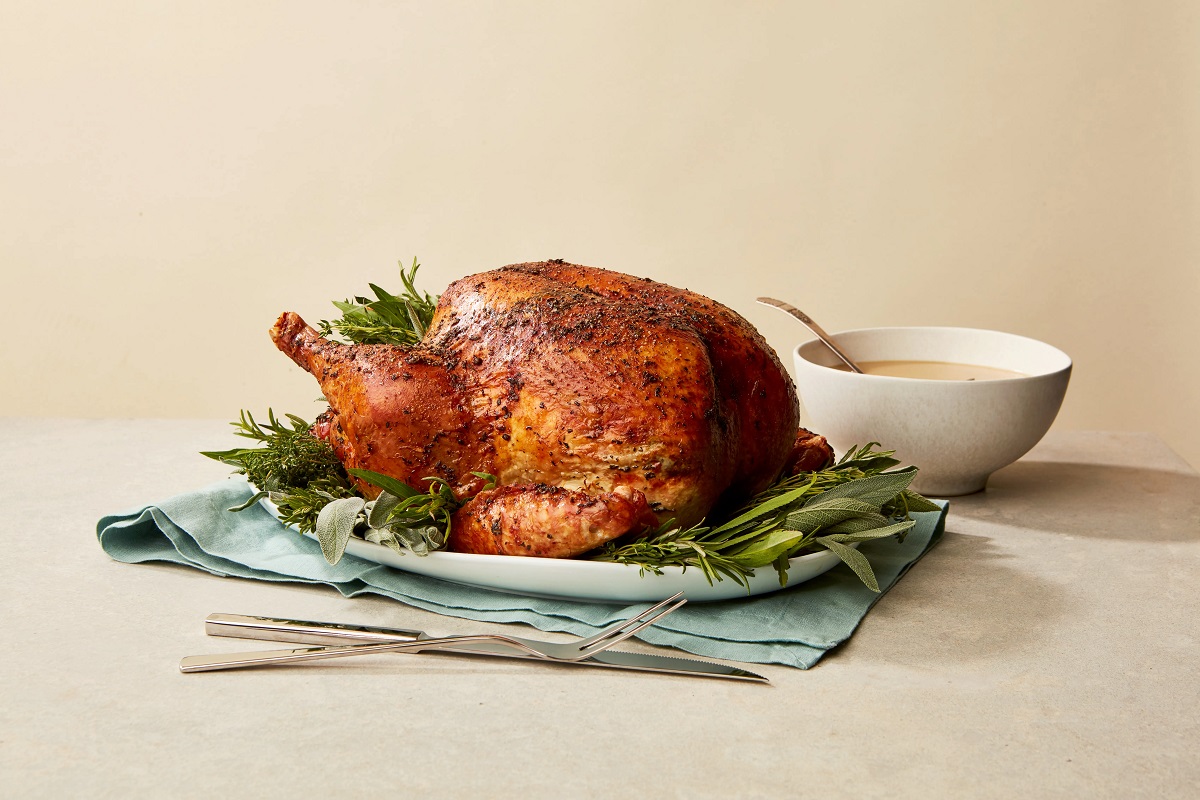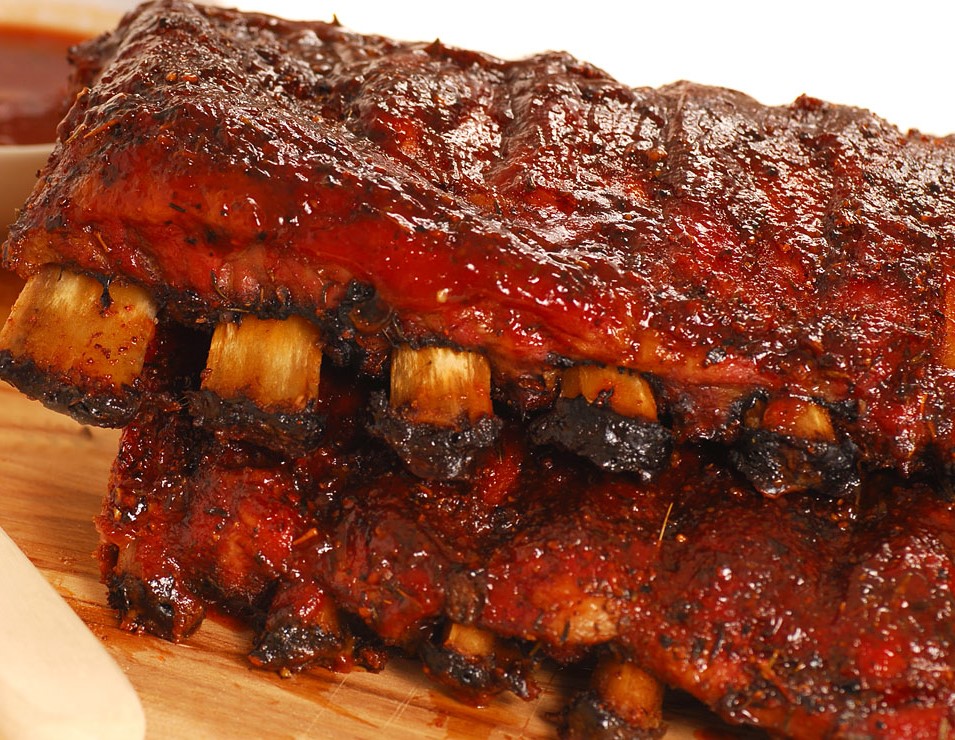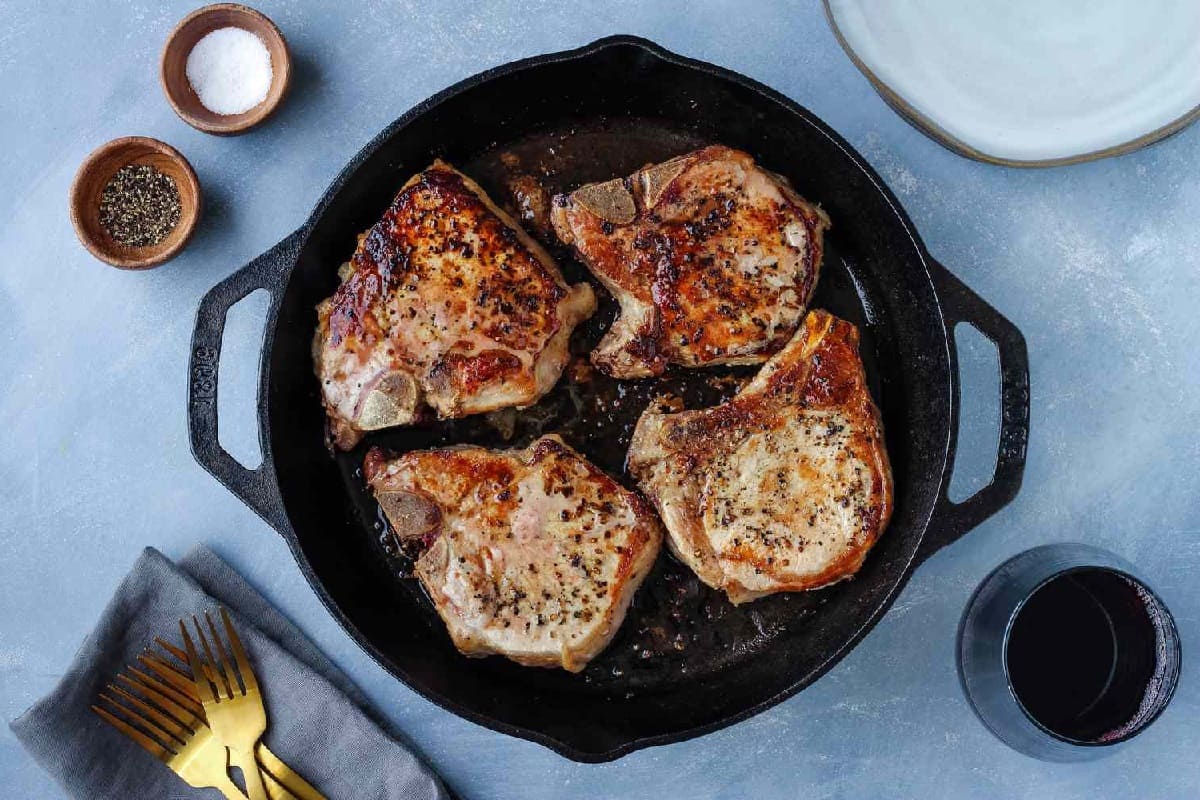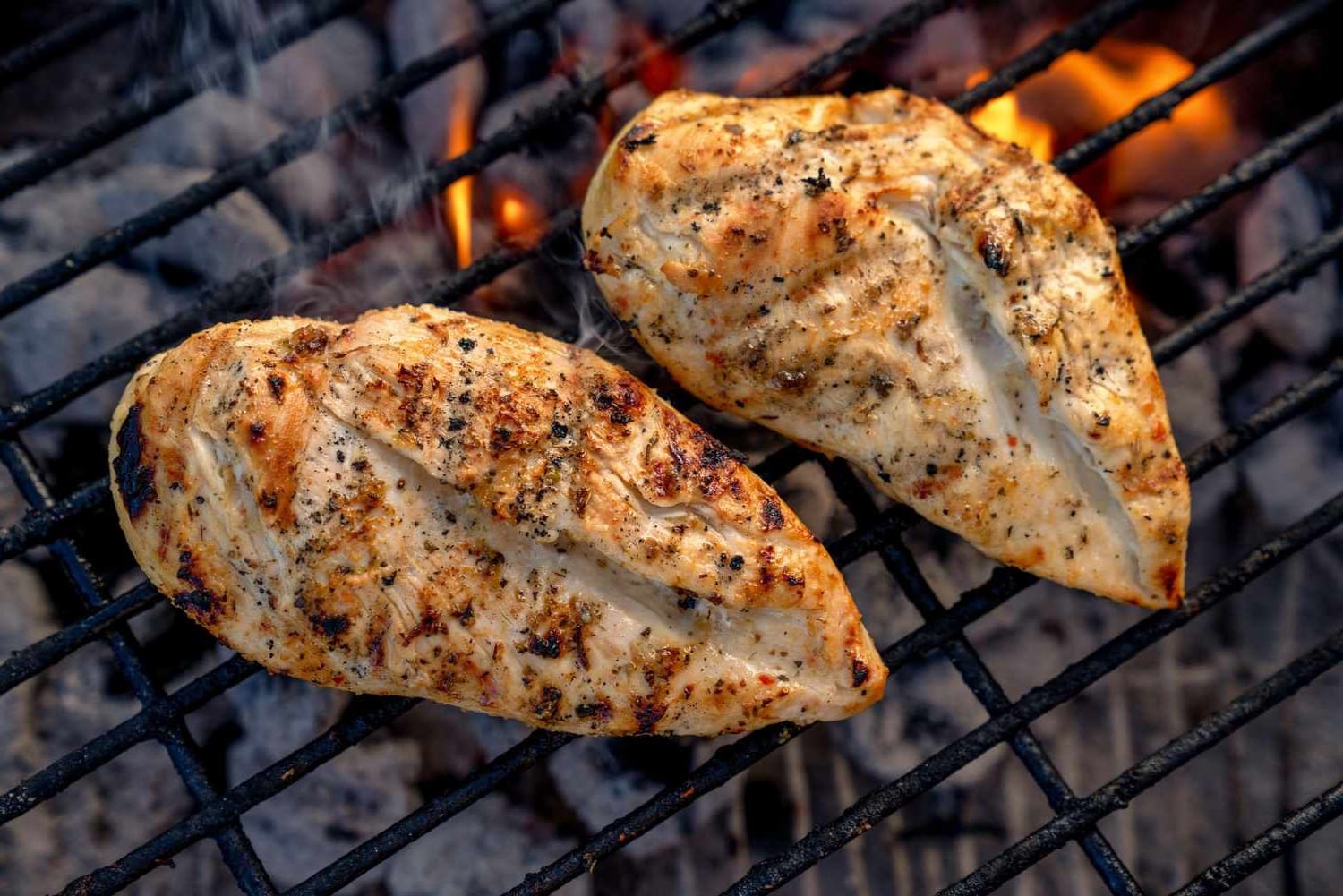Home>Home, Lifestyle & DIY>Optimal Cooking Times For The George Foreman Grill
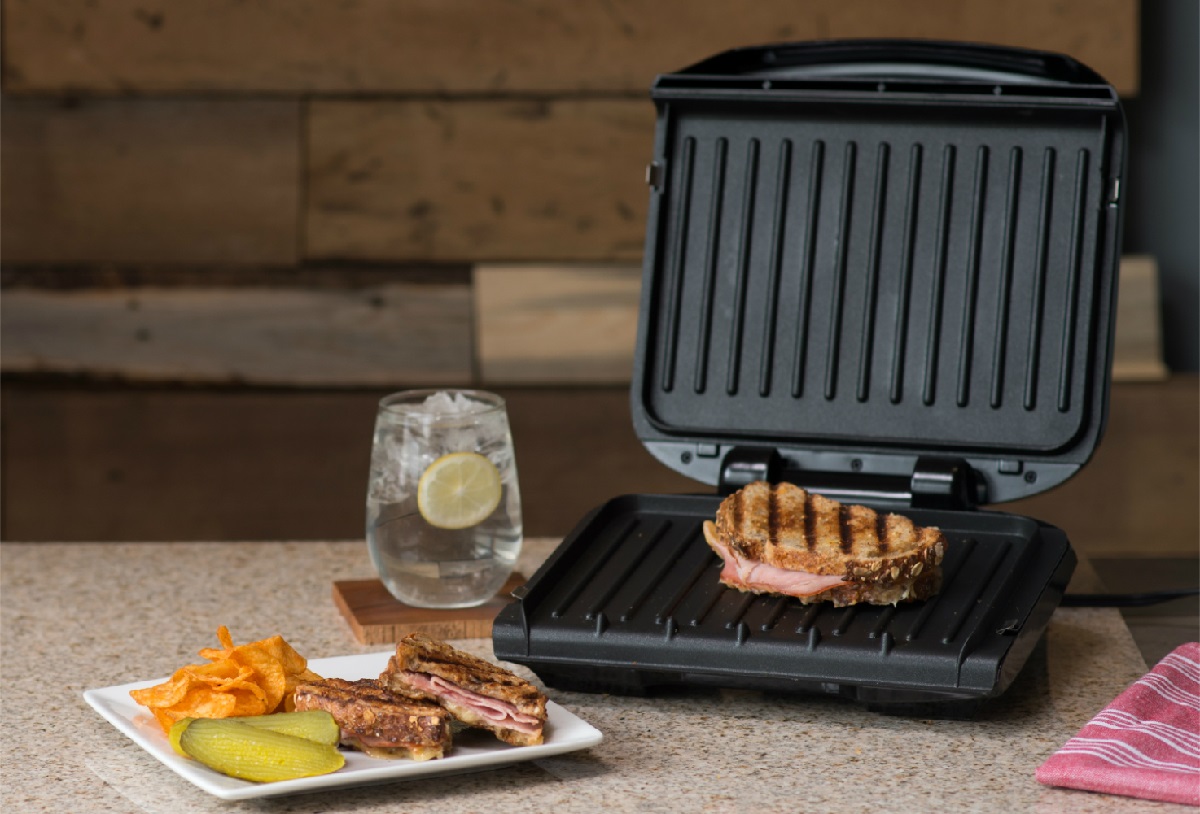

Home, Lifestyle & DIY
Optimal Cooking Times For The George Foreman Grill
Published: February 22, 2024
Discover the best cooking times for your George Foreman Grill and elevate your home cooking experience with our expert tips and tricks. Perfect for home chefs looking to optimize their lifestyle and DIY cooking skills.
(Many of the links in this article redirect to a specific reviewed product. Your purchase of these products through affiliate links helps to generate commission for Temperatures.com, at no extra cost. Learn more)
Table of Contents
Introduction
The George Foreman Grill has become a staple in many kitchens due to its convenience, efficiency, and ability to produce delicious, healthy meals. Whether you're a busy professional, a health-conscious individual, or someone who simply enjoys cooking, this versatile appliance offers a quick and easy way to prepare a wide variety of foods.
The grill's popularity stems from its unique design, which allows excess fat to drain away from the food as it cooks, resulting in leaner, healthier meals. Additionally, the grill's compact size and non-stick cooking surface make it a practical choice for those with limited kitchen space or anyone seeking a hassle-free cooking experience.
As with any cooking method, achieving the best results with the George Foreman Grill requires an understanding of optimal cooking times for different types of food. Factors such as the thickness of the cut, the starting temperature of the food, and the desired level of doneness all play a role in determining the ideal cooking time.
In this comprehensive guide, we will explore the optimal cooking times for various foods on the George Foreman Grill, including chicken, beef, fish, and vegetables. By mastering these cooking times, you can elevate your culinary skills and consistently prepare mouthwatering dishes with ease.
So, whether you're a novice cook looking to expand your repertoire or a seasoned chef seeking to streamline your cooking process, this guide will equip you with the knowledge and confidence to make the most of your George Foreman Grill. Let's dive in and discover the secrets to achieving perfectly grilled meals every time.
Benefits of Using the George Foreman Grill
The George Foreman Grill offers a plethora of benefits that make it a valuable addition to any kitchen. Its innovative design and practical features cater to the needs of modern home cooks, making it a popular choice for those seeking convenience, health-conscious cooking, and versatile meal preparation.
-
Efficient Fat Reduction: One of the standout features of the George Foreman Grill is its ability to reduce fat in foods. The grill's slanted design allows excess fat to drain away from the food as it cooks, resulting in leaner, healthier meals. This feature is particularly appealing to individuals looking to maintain a balanced diet without sacrificing flavor.
-
Quick Cooking Time: The grill's efficient heating element ensures rapid cooking, making it an ideal choice for busy individuals and families. With the George Foreman Grill, you can prepare meals in a fraction of the time it would take using traditional cooking methods, allowing you to enjoy delicious, home-cooked food without spending excessive time in the kitchen.
-
Versatile Cooking Options: From succulent steaks to tender vegetables, the George Foreman Grill accommodates a wide range of foods, making it a versatile cooking tool for various dietary preferences. Whether you prefer grilled chicken, seared fish, or caramelized vegetables, this appliance offers the flexibility to prepare diverse dishes with ease.
-
Compact and Easy to Clean: The grill's compact size makes it a practical choice for individuals with limited kitchen space. Additionally, its non-stick cooking surface simplifies the cleaning process, allowing for hassle-free maintenance and ensuring that the focus remains on enjoying the culinary creations rather than dealing with post-cooking cleanup.
-
Indoor and Outdoor Use: The George Foreman Grill is suitable for both indoor and outdoor use, providing the flexibility to grill your favorite foods regardless of the weather or available outdoor space. This versatility makes it a convenient option for year-round grilling, allowing you to savor the flavors of grilled cuisine without being limited by external factors.
In summary, the George Foreman Grill offers a host of benefits, including efficient fat reduction, quick cooking time, versatile cooking options, compact design, and indoor/outdoor versatility. These advantages make it a valuable kitchen companion for individuals seeking a convenient, healthy, and enjoyable cooking experience.
Factors Affecting Cooking Times
The optimal cooking times for various foods on the George Foreman Grill are influenced by several key factors, each of which plays a crucial role in determining the final outcome of the grilled dish. Understanding these factors is essential for achieving consistently delicious results and mastering the art of grilling with precision.
-
Food Thickness: The thickness of the food being grilled directly impacts the cooking time. Thicker cuts of meat or larger vegetables will require a longer cooking duration to ensure that the interior is thoroughly cooked while achieving the desired level of doneness. Conversely, thinner cuts will cook more quickly, necessitating a shorter cooking time to prevent overcooking.
-
Starting Temperature: The initial temperature of the food before it is placed on the grill can influence the cooking time. Foods that are chilled or at room temperature will require different cooking durations to reach the desired level of doneness. For example, room temperature steaks may cook more evenly and quickly compared to steaks straight from the refrigerator.
-
Desired Doneness: Individual preferences for the level of doneness also impact cooking times. Whether you prefer your meat rare, medium-rare, medium, or well-done, the cooking time will vary accordingly. Monitoring the cooking process and adjusting the duration based on the desired doneness is essential for achieving perfectly grilled results.
-
Grill Temperature: The temperature of the George Foreman Grill plays a significant role in determining cooking times. Preheating the grill to the appropriate temperature ensures that the food cooks evenly and efficiently. Additionally, the grill's temperature may need to be adjusted based on the specific food being cooked, as different ingredients respond differently to heat.
-
Food Moisture Content: The moisture content of the food being grilled can impact cooking times. Foods with higher moisture content, such as certain vegetables or marinated meats, may require slightly longer cooking durations to achieve the desired texture and flavor, as the moisture affects the heat transfer during the grilling process.
By considering these factors and making adjustments as necessary, you can optimize the cooking times for various foods on the George Foreman Grill, resulting in consistently delicious and perfectly grilled meals. Mastering the interplay of these factors empowers you to confidently experiment with different recipes and ingredients, elevating your culinary skills and enhancing the overall grilling experience.
Optimal Cooking Times for Chicken
Grilling chicken on the George Foreman Grill is a delightful way to savor tender, flavorful poultry with minimal effort. Achieving the perfect balance of succulence and charred goodness hinges on understanding the optimal cooking times for different cuts of chicken. Whether you're preparing boneless chicken breasts, juicy thighs, or delectable drumsticks, mastering the ideal cooking durations ensures that each bite is a culinary triumph.
Boneless Chicken Breasts
Boneless chicken breasts are a popular choice for grilling due to their versatility and lean profile. To achieve juicy, evenly cooked chicken breasts, preheat the George Foreman Grill to medium-high heat (approximately 375°F). Place the chicken breasts on the grill and cook for 6-8 minutes, depending on their thickness. For thicker cuts, extend the cooking time to ensure thorough cooking while maintaining moisture. It's essential to monitor the internal temperature, aiming for 165°F for safe consumption.
Chicken Thighs
Chicken thighs, known for their rich flavor and tender texture, benefit from slightly longer cooking times to render the fat and achieve a delectable char. Preheat the grill to medium heat (approximately 350°F) and grill the chicken thighs for 8-10 minutes, flipping them halfway through the cooking process. This duration allows the thighs to develop a caramelized exterior while retaining their succulent juiciness. As with chicken breasts, ensure that the internal temperature reaches 165°F for safe consumption.
Chicken Drumsticks
Grilling chicken drumsticks on the George Foreman Grill yields delectable results, with the skin crisping to perfection and the meat retaining its natural juices. Preheat the grill to medium heat (approximately 350°F) and grill the drumsticks for 10-12 minutes, turning them occasionally to ensure even cooking. This duration allows the drumsticks to achieve a golden-brown exterior while ensuring that the meat near the bone is thoroughly cooked.
Chicken Wings
Chicken wings, beloved for their versatility and ability to absorb flavorful marinades, require a slightly shorter cooking time to achieve a crispy exterior and tender, juicy meat. Preheat the grill to medium-high heat (approximately 375°F) and grill the wings for 8-10 minutes, turning them occasionally to promote even browning. This duration results in perfectly grilled wings that are ideal for serving as appetizers or main dishes.
Mastering the optimal cooking times for various cuts of chicken empowers you to create a diverse array of grilled poultry dishes with confidence and precision. By understanding the nuances of grilling different chicken cuts, you can elevate your culinary prowess and delight your taste buds with an array of delectable, perfectly grilled chicken creations.
Optimal Cooking Times for Beef
Grilling beef on the George Foreman Grill presents a tantalizing opportunity to savor the rich flavors and succulent textures of various cuts of beef. From tender steaks to savory burgers, mastering the optimal cooking times for beef ensures that each bite is a delectable symphony of charred perfection and juicy tenderness.
Steaks
When grilling steaks, achieving the perfect level of doneness is a culinary art form. For a 1-inch thick steak, preheat the George Foreman Grill to high heat (approximately 400°F) and grill the steak for 4-5 minutes for medium-rare, 5-6 minutes for medium, and 6-7 minutes for medium-well. It's essential to adjust the cooking time based on the thickness of the steak and the desired level of doneness, ensuring that the internal temperature reaches 135°F for medium-rare, 145°F for medium, and 160°F for medium-well.
Burgers
Grilling beef burgers on the George Foreman Grill yields mouthwatering results, with the exterior developing a delightful char while the interior remains juicy and flavorful. For 1/2-inch thick burger patties, preheat the grill to medium-high heat (approximately 375°F) and grill the burgers for 4-5 minutes for medium-rare, 5-6 minutes for medium, and 6-7 minutes for well-done. Adjust the cooking time based on the desired level of doneness, ensuring that the internal temperature reaches 160°F for safe consumption.
Ground Beef
Grilling ground beef on the George Foreman Grill offers a versatile canvas for creating an array of dishes, from flavorful meatloaf patties to savory meatballs. When grilling 1-inch thick ground beef patties, preheat the grill to medium heat (approximately 350°F) and grill the patties for 5-6 minutes, ensuring that the internal temperature reaches 160°F for safe consumption. This duration allows the patties to develop a caramelized exterior while retaining their juiciness and robust flavor.
Tenderloin
Grilling beef tenderloin on the George Foreman Grill is a luxurious culinary experience, yielding tender, melt-in-your-mouth results. For 1-inch thick tenderloin steaks, preheat the grill to medium-high heat (approximately 375°F) and grill the steaks for 5-6 minutes for medium-rare, 6-7 minutes for medium, and 7-8 minutes for well-done. Adjust the cooking time based on the desired level of doneness, ensuring that the internal temperature reaches 145°F for medium-rare, 160°F for medium, and 170°F for well-done.
Mastering the optimal cooking times for various cuts of beef empowers you to create a symphony of grilled delights, from perfectly seared steaks to succulent burgers, each infused with the irresistible flavors of charred perfection and juicy tenderness. With a nuanced understanding of grilling times, you can elevate your culinary repertoire and delight in a diverse array of perfectly grilled beef creations.
Optimal Cooking Times for Fish
Grilling fish on the George Foreman Grill offers a delightful way to savor the delicate flavors and tender textures of various seafood selections. From flaky fillets to robust seafood steaks, mastering the optimal cooking times for fish ensures that each bite is a harmonious fusion of succulence and charred perfection.
Salmon Fillets
Salmon, renowned for its rich flavor and omega-3 fatty acids, grills beautifully on the George Foreman Grill. For 1-inch thick salmon fillets, preheat the grill to medium heat (approximately 350°F) and grill the fillets for 4-6 minutes, depending on the desired level of doneness. Aim for a slightly translucent center for medium-rare or a fully opaque center for well-done. The grill's gentle heat preserves the salmon's natural moisture, resulting in tender, flaky fillets with a delightful hint of smokiness.
Tuna Steaks
Grilling tuna steaks on the George Foreman Grill yields delectable results, with the exterior developing a tantalizing sear while the interior remains tender and flavorful. For 1-inch thick tuna steaks, preheat the grill to high heat (approximately 400°F) and grill the steaks for 2-3 minutes per side for rare to medium-rare, or 4-5 minutes per side for medium to well-done. The brief cooking time ensures that the tuna retains its natural juiciness and robust flavor, offering a succulent dining experience with a satisfying charred exterior.
Halibut Fillets
Halibut, known for its mild, sweet flavor and firm texture, grills beautifully on the George Foreman Grill. For 1-inch thick halibut fillets, preheat the grill to medium-high heat (approximately 375°F) and grill the fillets for 4-5 minutes, flipping them halfway through the cooking process. This duration allows the halibut to develop a golden-brown crust while maintaining its tender, flaky interior, resulting in a delightful contrast of textures and flavors.
Read more: Optimal Temperature For A Medium Rare Steak
Swordfish Steaks
Swordfish, with its meaty texture and robust flavor, benefits from a slightly longer cooking time to achieve a delectable charred exterior and succulent interior. For 1-inch thick swordfish steaks, preheat the grill to medium-high heat (approximately 375°F) and grill the steaks for 5-6 minutes, turning them once during the cooking process. This duration allows the swordfish to develop a caramelized exterior while retaining its natural juiciness, offering a satisfying dining experience with a hint of smoky goodness.
Mastering the optimal cooking times for various fish varieties empowers you to create a symphony of grilled seafood delights, each infused with the irresistible flavors of charred perfection and tender succulence. With a nuanced understanding of grilling times, you can elevate your culinary repertoire and delight in a diverse array of perfectly grilled fish creations.
Optimal Cooking Times for Vegetables
Grilling vegetables on the George Foreman Grill offers a delightful way to elevate the natural flavors and textures of various produce, creating vibrant and nutritious accompaniments to any meal. From tender asparagus spears to caramelized bell peppers, mastering the optimal cooking times for vegetables ensures that each bite is a harmonious fusion of charred perfection and vibrant freshness.
Asparagus
Asparagus, with its delicate yet robust flavor, grills beautifully on the George Foreman Grill. For medium-sized asparagus spears, preheat the grill to medium-high heat (approximately 375°F) and grill the spears for 4-6 minutes, turning them occasionally to ensure even cooking. This duration allows the asparagus to develop a delightful char while retaining its tender yet crisp texture, resulting in a delightful contrast of flavors and a hint of smokiness.
Bell Peppers
Grilling bell peppers on the George Foreman Grill yields mouthwatering results, with the exterior developing a tantalizing char while the interior remains tender and sweet. For halved bell peppers, preheat the grill to medium heat (approximately 350°F) and grill the peppers for 6-8 minutes, skin side down, until the skin is charred and the flesh is tender. This duration allows the peppers to achieve a delightful smoky flavor while retaining their natural sweetness, offering a versatile and colorful addition to any dish.
Read more: Optimal Internal Temperature For Meatloaf
Zucchini and Yellow Squash
Zucchini and yellow squash, with their mild yet distinct flavors, benefit from a moderate cooking time to achieve a delightful caramelized exterior and tender interior. For 1/2-inch thick slices, preheat the grill to medium heat (approximately 350°F) and grill the slices for 4-5 minutes per side, allowing them to develop a golden-brown crust while maintaining their natural juiciness. This duration results in perfectly grilled zucchini and yellow squash, ideal for serving as a side dish or incorporating into various culinary creations.
Portobello Mushrooms
Grilling portobello mushrooms on the George Foreman Grill offers a savory and meaty dining experience, with the exterior developing a delightful char while the interior remains tender and flavorful. For whole portobello mushrooms, preheat the grill to medium-high heat (approximately 375°F) and grill the mushrooms for 5-7 minutes, gill side down, until they are tender and juicy. This duration allows the mushrooms to develop a rich, smoky flavor while retaining their robust texture, offering a satisfying and versatile addition to grilled dishes.
Mastering the optimal cooking times for various vegetables empowers you to create a symphony of grilled delights, each infused with the irresistible flavors of charred perfection and vibrant freshness. With a nuanced understanding of grilling times, you can elevate your culinary repertoire and delight in a diverse array of perfectly grilled vegetable creations.
Tips for Adjusting Cooking Times
Adjusting cooking times is a crucial aspect of mastering the art of grilling with the George Foreman Grill. While the recommended cooking times serve as valuable guidelines, various factors may necessitate adjustments to achieve the desired results. Whether it's accommodating different food thicknesses, compensating for starting temperatures, or catering to individual preferences for doneness, understanding how to adapt cooking times empowers you to consistently create perfectly grilled dishes. Here are some essential tips for adjusting cooking times to optimize your grilling experience:
-
Food Thickness: Thicker cuts of meat or larger vegetables will require longer cooking times to ensure thorough cooking while maintaining the desired level of doneness. Conversely, thinner cuts will cook more quickly, necessitating shorter cooking times to prevent overcooking. When grilling a variety of food items, it's essential to consider their thickness and adjust the cooking times accordingly to achieve uniform results.
-
Starting Temperature: The initial temperature of the food before it is placed on the grill can significantly impact cooking times. Foods that are chilled or at room temperature will require different cooking durations to reach the desired level of doneness. For example, room temperature steaks may cook more evenly and quickly compared to steaks straight from the refrigerator. Adjusting the cooking times based on the starting temperature of the food ensures that it cooks evenly and reaches the desired level of doneness.
-
Desired Doneness: Individual preferences for the level of doneness play a pivotal role in determining cooking times. Whether you prefer rare, medium-rare, medium, or well-done, it's essential to adjust the cooking times accordingly. Monitoring the cooking process and making precise adjustments based on the desired level of doneness ensures that each grilled dish meets your specific culinary preferences.
-
Grill Temperature: The temperature of the George Foreman Grill is a key factor in determining cooking times. Preheating the grill to the appropriate temperature ensures that the food cooks evenly and efficiently. Additionally, the grill's temperature may need to be adjusted based on the specific food being cooked, as different ingredients respond differently to heat. Monitoring and adjusting the grill temperature as needed is essential for achieving optimal cooking times.
-
Food Moisture Content: The moisture content of the food being grilled can impact cooking times. Foods with higher moisture content, such as certain vegetables or marinated meats, may require slightly longer cooking durations to achieve the desired texture and flavor, as the moisture affects the heat transfer during the grilling process. Adjusting the cooking times to account for the moisture content of the food ensures that it cooks to perfection.
By implementing these tips and making precise adjustments to cooking times based on the specific characteristics of the food being grilled, you can elevate your grilling skills and consistently produce delectable, perfectly grilled dishes. Understanding the nuances of adjusting cooking times empowers you to create culinary masterpieces with confidence and precision, ensuring that each grilled creation is a testament to your expertise and passion for the art of grilling.
Conclusion
In conclusion, mastering the optimal cooking times for the George Foreman Grill is a transformative journey that empowers home cooks to elevate their culinary prowess and consistently create delectable, perfectly grilled dishes. By understanding the interplay of factors such as food thickness, starting temperature, desired doneness, grill temperature, and food moisture content, individuals can fine-tune their grilling techniques and achieve exceptional results with confidence and precision.
The George Foreman Grill, with its efficient fat reduction, quick cooking time, versatile cooking options, compact design, and indoor/outdoor versatility, emerges as a valuable kitchen companion that caters to the diverse needs of modern home cooks. Whether it's preparing succulent chicken, sizzling beef, flaky fish, or vibrant vegetables, the grill offers a convenient and health-conscious approach to meal preparation, allowing individuals to savor the flavors of grilled cuisine without compromising on taste or nutrition.
The comprehensive guide to optimal cooking times for chicken, beef, fish, and vegetables equips individuals with the knowledge and expertise to navigate the nuances of grilling various foods with finesse. From tender chicken breasts to perfectly seared steaks, each section provides detailed insights into achieving the ideal cooking durations for different cuts of meat, ensuring that every grilled creation is a culinary triumph.
Furthermore, the tips for adjusting cooking times serve as invaluable tools for individuals seeking to refine their grilling skills and adapt to the unique characteristics of different ingredients. By implementing precise adjustments based on food thickness, starting temperature, desired doneness, grill temperature, and food moisture content, home cooks can tailor the grilling process to suit their specific culinary preferences and consistently produce perfectly grilled dishes that delight the senses.
Ultimately, the art of grilling with the George Foreman Grill transcends mere culinary preparation; it embodies a harmonious fusion of convenience, health-consciousness, and culinary creativity. As individuals embark on their grilling adventures armed with a nuanced understanding of optimal cooking times and the art of adjustment, they embark on a journey of culinary discovery, where each grilled dish becomes a testament to their expertise, passion, and commitment to the art of grilling.
In essence, the George Foreman Grill, coupled with the knowledge of optimal cooking times and the art of adjustment, empowers individuals to transform ordinary ingredients into extraordinary culinary creations, infusing each dish with the irresistible flavors of charred perfection, succulent tenderness, and vibrant freshness. With this comprehensive guide as a companion, home cooks can embark on a flavorful journey of grilling mastery, where each perfectly grilled dish becomes a celebration of culinary excellence and the joy of savoring delicious, home-cooked meals.
